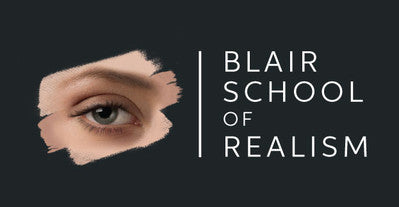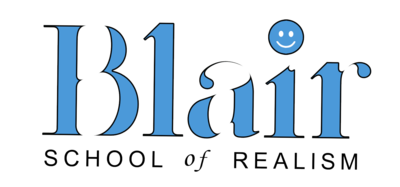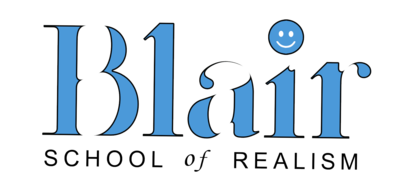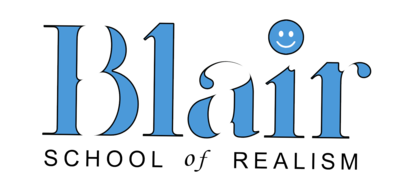The outline shows the basics you should be familiar with before attending any of our airbrushing workshops. Anyone that doesn't feel confident in their understanding and execution of these basic skills is urged to take a beginners class or a Foundations day prior to the start of your workshop.
I. Airbrush parts and maintenance
A. Types of airbrushes
1. Single action - press down for air and paint at the same time
2. Dual action - press down for air and pull back for paint
B. Disassemble and discus parts
C. Reassembly
D. Cleaning
1. Flush water through airbrush (AB) until it runs clear
2. Keep water in the color cup during breaks
a) Prevents air from drying any residual paint left after rinsing
3. Remove needle and check for paint residue clean replace and repeat until gun is clean
4. Dried paint can be removed with solvent from outside of AB and metal parts.
a) Solvents differ according to paints used
b) Solvents should not be sprayed
(1) Many are dangerous to breathe
(2) Some may damage AB’s internal O-rings
c) Always rinse any part solvents come in contact with using water
(1) Some solvents may weaken or damage chrome plating
II. Posture and Holding the airbrush
A. Stand or sit comfortably at a slight angle with dominant arm slightly closer to the surface.
1. This helps with full range of movement
B Always move from the shoulders not the elbow or wrist.
C. Use two hands for stability
1. Non-dominate hand should act as support and bridge to surface
D. Finger position relates to level of control during fine detail work
III. Mark making variables
A. Amount of paint released
1. How far you pull back on the trigger
a) The further you pull back the more paint released
B. Distance from the surface
1. Closer to the surface creates thinner, more dense (darker) marks
2. Farther from the surface creates broader, less dense (lighter) marks
C. The amount of air pressure used
1. More pressure finer atomization (smoother marks)
2. Less pressure courser atomization (marks look speckled)
3. Air pressure can be set at the air regulator (20-25 psi for illustration – up to 70 psi for T-shirts)
a) Air regulator with moisture trap should be attached to manifold/air source
4. Crimping the hose will decrease air pressure
a) Useful for special effects
D. The tilt of the airbrush
1. Keeping airbrush perpendicular to surface creates even marks
2. Tilting airbrush directs overspray toward direction of tilt
a) Helps to keep paint contained during freehand work
b) Can be problematic when constant line work is required
E. Aiming and Targeting
1. Are making the mark precisely where you want them
a) Practice is essential to acquire and maintain good targeting
b) Targeting from greater distances is more challenging than targeting up close to the surface
IV. Types of marks
A. Dots (The most important mark you will learn to make)
1. Position airbrush where you want to make your mark
2. Press down on trigger to start air
3. Ease back on trigger to release paint
4. Return trigger to stop flow of paint
5. Move to new position and repeat 1-5
6. After last mark: release downward presser on trigger to stop airflow
B. Lines (Can be thought of as moving Dots)
1. Position airbrush before the place you want to make your mark
2. Press down on trigger to start air
3. Start your lateral movement towards where you want to make your mark keeping airbrush perpendicular to and equal distance from the surface
4. Ease back on trigger to release paint while continuing your movement
5. Return trigger to stop flow of paint when you have come to the end of the mark
6. Continue movement beyond the end of the mark (follow through)
7. After follow through: release downward presser on trigger to stop airflow
8. Move to new position and repeat 1-8
C. Dagger Strokes (can be thought of as moving lines)
1. Position airbrush several inches from the surface pointing where you want to make your mark
2. Press down on trigger to start air
3. Begin to move in towards (decreasing distance from) and laterally across the surface while…
4. Easing back on trigger to release paint
5. As you get closer to the surface you will need to slowdown then stop the flow of paint by returning the trigger forward to the off position
6. Continue movement beyond the end of the mark (follow through)
7. After follow through: release downward presser on trigger to stop airflow
8. Move to new position and repeat 1-7
D. Shading
1. Shading is making the marks you have already learned from a distance, causing them to blend together into a continuous tone
2. Proper shading requires use of a technique known as “Triggering”
a) Triggering is tuning the paint off then back on with each directional change while keeping the air flowing.
b) See Triggering attachment
3. Directional spraying can help diminish unwanted overspray and helps conserve materials
4. Shading should be built up slowly until the final depth of color and darkness is reached
a) Spraying too much paint too quickly will cause puddles, runs, splatters, uneven coverage and make accuracy nearly impossible.
5. Dusting is shading with the lightest possible coverage. Often used to change the tint of something with minimal impact on value (darkness)
E. Freehand airbrushing
1. Any airbrushing done without aid of any materials causing paint to be blocked or directed either towards or away from any given area.
2. Line work – typically done in one pass, with bold dark strokes
a) Most often use in outlining, cartooning, and lettering
b) Line work is opposite of shading
V. Controlling Edges
A. Images are made up of hard and soft edges
B. Freehand airbrushing is best suited for soft edges
C. Masking is used to create hard edges
1. Masking is blocking paint from reaching specific areas by covering them with any marital or object that prevents or limits the amount of spray that can reach the surface.
a) Tape and masking films typically have an adhesive that keeps them in place while in use.
2. Shields ,freehand shields or loose masks are masks that have no adhesive and are held in place are held in place by hand or tape protect areas from overspray.
3. Stencils are pre-cut shields or masks that are sprayed through to make a specific pre-determined shape or picture.
D. Painting or allowing overspray to collect near a mask creates a hard edge
1. If you don’t want an edge don’t use a mask
E. Bounce Technique
1. Is painting on the masking material and allowing overspray to drift onto your painting in a controlled manner
2. It is very useful when only a small amount of paint in wanted in a specific area.
3. It can help overcome some deficiencies with regards to targeting
4. Used when Ghosting in an edge or shape
a) Ghosting in refers to applying the slightest amount of paint making it barely visible - to be used as a guide for adding additional paint with or without use of masks.
Triggering
Learning to spray in smooth even coats takes some practice.
We call it triggering.
It is accomplished by turning the flow of paint on and off while keeping the air flowing.
Try not to change the direction you are moving the airbrush in the middle of a stroke
If you are making a stroke from left to right do not change direction of the stroke to (right to left) without first stopping the flow of paint.
If you do change directions suddenly you will end up with what is referred to as the barbell effect.

The images on the left side show proper triggering those on the right are shown with no triggering (just leaving the paint on and painting as if using crayons in a coloring book).
This document is provided as a supplement to Blair School of Art’s Airbrushing Foundations workshop. Blair School of Art retains all rights to these materials. This document may not be reproduced in whole or in part nor may it be distributed for any reason without express written permission from Blair School of Realism For additional information about the school call: (803) 635-8060, or email: classes@schoolofrealism.com

